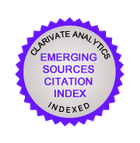1. Pashkevich A., Chaikovsky A. Microgreens as a functional product of the 21st century. Nauka i innovatsii = Science and Innovation, 2021, no. 11 (225), pp. 58-63 (in Russian).
2. Ebert A. W. Sprouts, microgreens, and edible flowers: the potential for high value specialty produce in Asia. High value vegetables in Southeast Asia: production, supply and demand: proceedings SEAVEG 2012, Chiang Mai, Thailand, 24-26 January 2012. Shanhua, 2012, pp. 216-227.
3. Ivanova M. I., Kashleva A. I., Mikhailov V. V., Bukharov A. F., Baleev D. N., Razin O. A. Microgreens or a system of farming without soil. Gavrish, 2016, no. 6, pp. 34-42 (in Russian).
4. Di Gioia F., Santamaria P. Microgreens. Nuovi alimenti freschi e funzionali per esplorare tutto il valore della biodiversità = Novel fresh and functional food to explore all the value of biodiversity. Bari, ECO-logica, 2015. 115 p.
5. Pinto E., Almeida A. A., Aguiar A. A., Ferreira I. M. P. L. V. O. Comparison between the mineral profile and nitrate content of microgreens and mature lettuces. Journal of Food Composition and Analysis, 2015, vol. 37, pp. 38-43. https://doi. org/10.1016/j.jfca.2014.06.018
6. Ghoora M. D., Haldipur A. C., Srividya N. Comparative evaluation of phytochemical content, antioxidant capacities and overall antioxidant potential of select culinary microgreens. Journal of Agriculture and Food Research, 2020, vol. 2, art. 100046. https://doi.org/10.1016/j.jafr.2020.100046
7. Johnson S. A., Prenni J. E., Heuberger A. L., Isweiri H., Chaparro J. M., Newman S. E. [et al.]. Comprehensive evaluation of metabolites and minerals in 6 microgreen species and the influence of maturity species and the influence of maturity. Current Developments in Nutrition, 2020, vol. 5, no. 2, art. 180. https://doi.org/10.1093/cdn/nzaa180
8. Singh N., Rani S., Michra A. Cruciferous microgreens: growing performance and their scope as super foods at high altitude locations. Progressive Horticulture, 2019, vol. 51, no. 1, pp. 41-48. https://doi.org/10.5958/2249-5258.2019.00004.6
9. Fuente B., Lŏpez-Garcia G., Mańez V., Alegría A., Barberá R., Cilla A. Evaluation of the bioaccessibility of antioxidant bioactive compounds and minerals of four genotypes of Brassicaceae microgreens. Foods, 2019, vol. 8, no. 7, art. 250. https://doi.org/10.3390/foods8070250
10. Kyriacou M. C., El-Nakhel C., Graziani G., Pannico A., Soteriou G. A., Giordano M., Ritieni A., De Pascale S., Rouphael Y. Functional quality in novel food sources: genotypic variation in the nutritive and phytochemical composition of thirteen microgreens species. Food Chemistry, 2018, vol. 277, pp. 107-118. https://doi.org/10.1016/j.foodchem.2018.10.098
11. Konovalova I. O., Berkovich Yu. A., Erokhin A. N., Smolyanina S. O., Yakovleva O. S., Znamensky A. I., Tarakanov I. G., Radchenko S. G., Lapach S. N., Trofimov Yu. V., Tsvirko V. I. Optimization of the LED lighting system of the vitamin space greenhouse. Aviakosmicheskaya i ecologicheskaya meditsina = Aerospace and Environmental Medicine, 2016, vol. 50, no. 3, pp. 17-23 (in Russian).
12. Zhang X., Bian Z., Yuan X., Chen X., Lu C. A review on the effects of light-emitting diode (LED) light on the nutrients of sprouts and microgreens. Trends in Food Science & Technology, 2020, vol. 99, pp. 203-216. https://doi.org/10.1016/j.tifs.2020.02.031
13. Brazaitytė A., Vaštakaitė V., Viršilė A., Jankauskienė J., Samuolienė G., Sakalauskienė S., Novičkovas A., Miliauskienė J., Duchovskis P. Changes in mineral element content of microgreens cultivated under different lighting conditions in a greenhouse. Acta Horticulturae, 2018, no. 1227, pp. 507-516. https://doi.org/10.17660/ActaHortic.2018.1227.64
14. Craver J. K., Gerovac J. R., Lopez R. G., Kopsell D. A. Light Intensity and Light quality from Sole-source Lightemitting Diodes Impact Phytochemical Concentrations within Brassica Microgreens. Journal of the American Society for Horticultural Science, 2017, vol. 142, no. 1, pp. 3-12. https://doi.org/10.21273/JASHS03830-16
15. Ermakov A. I. (ed.). Methods of biochemical research of plants. Leningrad, Agropromizdat Publ., 1987. 429 p. (in Russian).
16. Marsov N. G. Phytochemical study and biological activity of cranberries, cranberries and blueberries. Perm, 2006. 200 p. (in Russian).
17. Swain T., Hillis W. E. The phenolic constituents of Prunus domestica. I. The quantitative analysis of phenolic constituents. Journal of the Science of Food and Agriculture, 1959, vol. 10, no. 1, pp. 63-68. https://doi.org/10.1002/JSFA.2740100110
18. Skorikova Yu. G., Chaftan E. A. Method for determining anthocyanins in fruits and berries. Trudy III Vsesoyuznogo seminara po biologicheski aktivnym (lechebnym) veshchestvam plodov i yagod [Proceedings of the III All-Union seminar on biologically active (therapeutic) substances of fruits and berries]. Sverdlovsk, 1968, pp. 451-460 (in Russian).
19. Andreyeva V. Yu., Kalinkina G. I., Kolomiets N., Isaikina N. V. Procedure for determination of antocyans in the black chokeberries (Aronia melanocarpa). Pharmatsiya = Pharmacy, 2013, no. 3, pp. 19-21 (in Russian).
20. Determination of the content of tannins in medicinal plant raw materials. State Pharmacopoeia of the USSR. Issue 1. General methods of analysis. 11tn ed. Moscow, 1987, pp. 286-287 (in Russian).




































